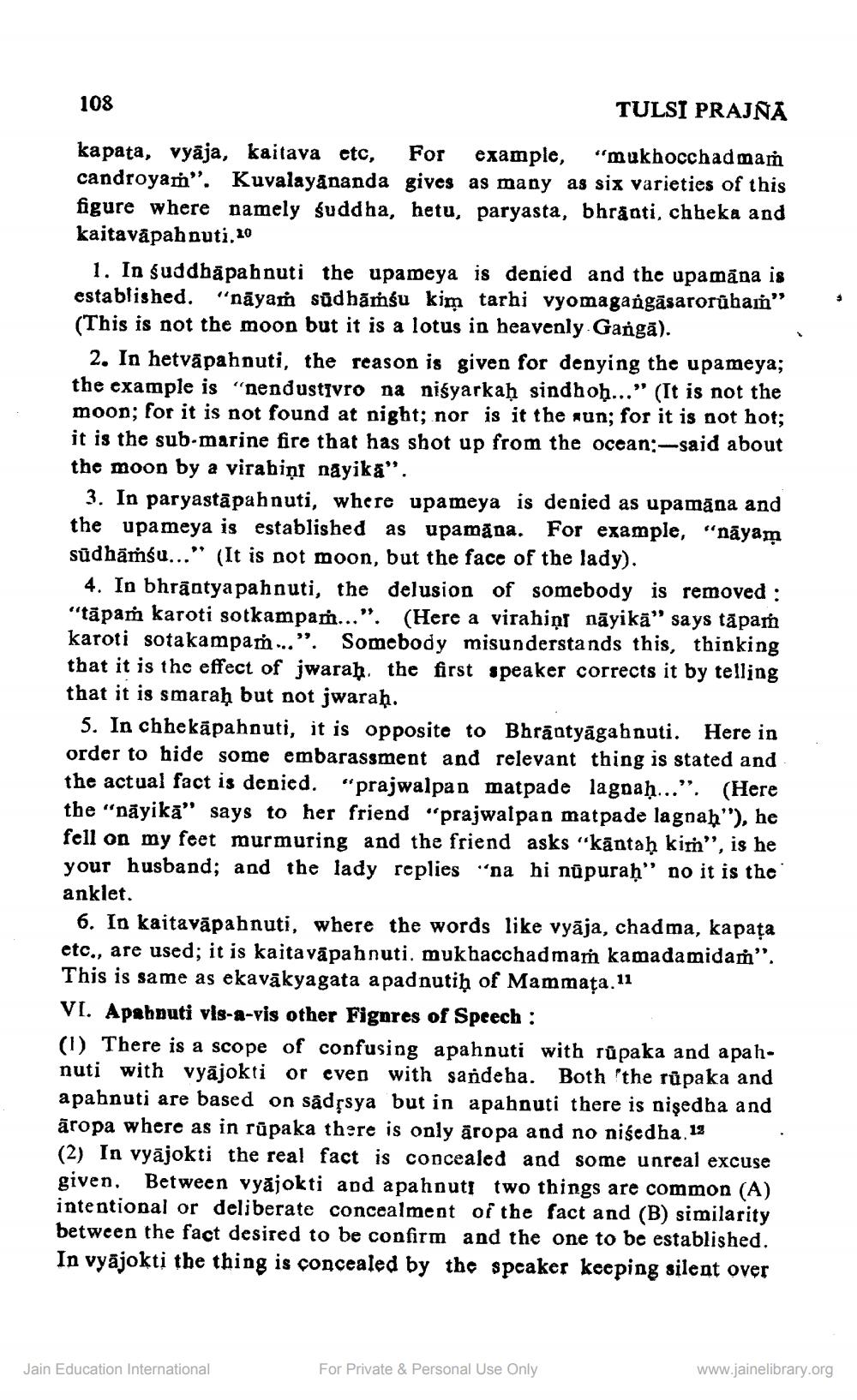________________
108
TULSI PRAJNA
kapata, vyāja, kaitava etc, For example, "mukhocchadmań candroyar". Kuvalayananda gives as many as six varieties of this figure where namely suddha, hetu, paryasta, bhriati, chheka and kaitavāpahnuti,20
1. In guddhāpahnuti the upameya is denied and the upamāna is established. "nāyam sūdhāṁğu kim tarhi vyomagangāsarorübain" (This is not the moon but it is a lotus in heavenly Gangā).
2. In hetvāpahnuti, the reason is given for denying the upameya; the example is "nendustTvro na nisyarkah sindhoh...” (It is not the moon; for it is not found at night; nor is it the mun; for it is not hot; it is the sub-marine fire that has shot up from the ocean:-said about the moon by a virabiņi nāyika".
3. In paryastāpahnuti, where upameya is denied as upamāna and the upameya is established as upamāna. For example, "nāyam sūdhāṁsu..." (It is not moon, but the face of the lady).
4. In bhrāntya pahnuti, the delusion of somebody is removed : "tāpaṁ karoti sotkampan...". (Here a virahiņt nāyikā” says tāpam karoti sotakampaņ...". Somebody misunderstands this, thinking that it is the effect of jwaraḥ, the first speaker corrects it by telling that it is smaraḥ but not jwaraḥ.
5. In chhekāpahnuti, it is opposite to Bhrāatyāgahnuti. Here in order to hide some embarassment and relevant thing is stated and the actual fact is denied. "prajwalpan matpade lagoaḥ...”. (Here the "nāyikā" says to her friend "prajwalpan matpade lagnaþ"), he fell on my feet murmuring and the friend asks “kāntaḥ kim”, is he your husband; and the lady replies "na hi nūpurah" no it is the anklet.
6. In kaitavāpahnuti, where the words like vyāja, chadma, kapata etc., are used; it is kaita vāpahnuti. mukhacchadmam kamadamidań”. This is same as ekavākyagata apadnutiḥ of Mammața. 11 VI. Apabouti vis-a-vis other Fignres of Speech : (1) There is a scope of confusing apahnuti with rûpaka and apahnuti with vyājokti or even with sardeha. Both 'the rûpaka and apabnuti are based on sadrsya but in apahnuti there is nisedha and āropa where as in rūpaka there is only äropa and no nisedha. 12 (2) In vyājokti the real fact is concealed and some unreal excuse given. Between vyājokti and apahnuti two things are common (A) intentional or deliberate concealment of the fact and (B) similarity between the fact desired to be confirm and the one to be established. In vyājokti the thing is concealed by the speaker keeping silent over
Jain Education International
For Private & Personal Use Only
www.jainelibrary.org




